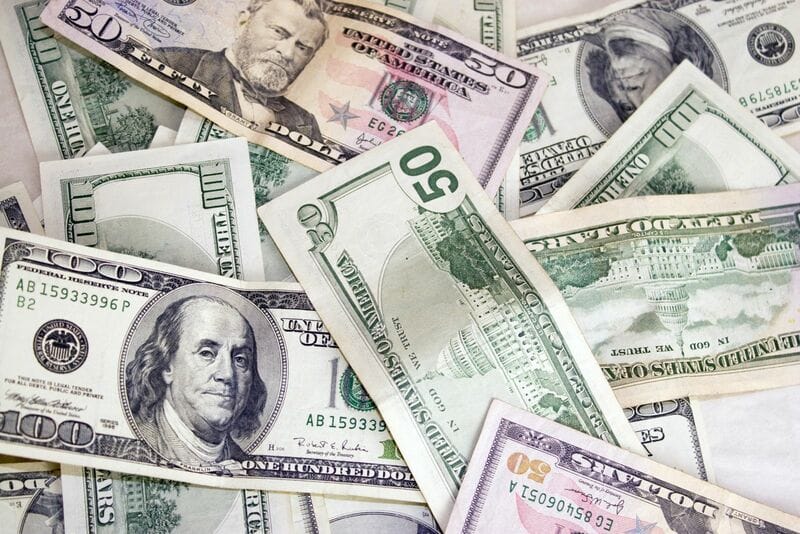
When I last wrote about the dollar index on Barchart in late January 2023, I pointed out the 103.96 level had become a significant pivot point. In May 2022, the dollar index moved above 103.96 for the first time since 2002, a technical breakout that took it to a 114.745 high in September 2022. In late January, the index was at the 101.84 level on the nearby futures contract after the technical resistance level became support, and the index fell into a bearish trend.
Over the past weeks, the index has rallied from under the 101 level to the pivot point, which could have significant ramifications for markets across all asset classes.
The dollar index rallies from the early February lows
The nearby dollar index futures contract experienced a 12.3% decline from 114.745 in late September 2022 to 100.680 on February 2, 2023.

The short-term chart highlights the index found at least a temporary bottom above the 100 level and bounced above the critical 104 level on February 24. The index has been trading around the 104 level since mid-February.
When the dollar index broke out to the upside in May 2022, the break above the 103.960 technical resistance level led to a significant move to the 114.745 high. The technical resistance became support, giving way to the downside in early January 2023. So far, the index has held above the 100 level despite eclipsing the technical support. Still, the 104 level has become a significant pivot point for the index that measures the U.S. dollar against the other world reserve currencies.
The latest inflation data was bullish for the dollar index
Over the past months, the consumer and producer price index data had been declining, indicating an easing of inflationary pressures. The market perceived falling inflation as a reason for the Fed to curb its enthusiasm for Fed Fund Rate increases. At the early February meeting, the committee raised the rate by only 25 basis points, the smallest increase in months. However, the Fed warned that inflation was still too high and further credit tightening was “appropriate.”
Since interest rate differentials are a function of currency values, the dollar index slid as the inflation environment improved. Meanwhile, the January CPI, PCE, and PPI data came in higher than the market had expected, setting the stage for a continuation of higher rates, which likely stopped the descent of the dollar index and returned it to the 104-pivot point.
Geopolitics and debt could make the index less influential for three reasons
Over the past decades, the dollar has been the dominant world currency, with most cross-border transactions settled in U.S. dollars. The dramatic change in the geopolitical landscape could cause significant changes in the global financial system that decreases the dollar’s influence over the coming months and years. Three factors diminish the dollar’s position:
- The “no-limits” agreement between China and Russia created a bifurcation of the world’s nuclear powers. As China and Russia challenge the U.S.’s position, they will likely seek alternative payment vehicles, abandoning the U.S. currency for trade and other transactions.
- Sanctions on Russia caused the Russian government and central bank to seek alternatives to bolster the Russian economy. Last year, the Russian central bank declared that 5,000 rubles were exchangeable for one gram of gold, a challenge to the dollar’s position.
- The U.S. debt at over $31.5 trillion is a hot-button domestic U.S. political issue. The current Fed Funds Rate makes servicing the debt a nearly $1.5 trillion annual cost. Higher rates will increase the interest payments and cause the deficit to grow. The U.S. risks default if it does not raise the debt ceiling, which could cause significant damage to the U.S. economy and the U.S. dollar’s value on international markets.
The bottom line is that the dollar index faces geopolitical and domestic issues that will likely cause volatility and could lower the dollar’s value over the coming months and years. While interest rates will likely rise as the Fed battles inflation, these factors could still cause dollar weakness.
Stocks and commodities are watching the U.S. currency
The stock market is susceptible to the dollar’s value as a strong dollar makes U.S. multinational companies less competitive worldwide. A lower dollar tends to increase those earnings as U.S. companies become more competitive. Therefore, earnings that help or hinder the overall stock market are partially a function of the dollar’s value and its path of least resistance.
Meanwhile, the dollar remains the benchmark pricing mechanism for most commodities. A rising dollar tends to weigh on commodity prices as they become more expensive in other currency terms. A falling dollar supports higher commodity prices as lower prices in other currency terms support demand for those products.
Meanwhile, as the dollar loses its footing in the worldwide financial arena, it will likely have a declining influence on raw material prices. China, the world’s leading commodity consumer, has been negotiating with commodity-producing countries for cross-border transactions, exchanging commodities for non-dollar assets.
Gold could be more critical than that dollar, given the recent trends
Gold is the world’s oldest means of exchange, and long before there were dollars, euros, yen, yuan, rubles, pounds, or any other world fiat currencies, gold was hard money. Over the past years, central banks, governments, and monetary authorities have been aggressive gold buyers. China and Russia, two leading gold-producing countries, have vacuumed domestic production to increase reserves. If China and Russia decide to back the yuan and ruble with the precious metal, it could change the international foreign exchange market’s dynamics. The U.S. has the world’s leading gold reserves, but Russia is fifth and China sixth. However, Russia and China’s gold holdings are dubious as they consider gold a strategic asset and holdings a national security matter. Russia and China likely own more gold than the 2,300 and 1,950 reported metric ton holdings.
The pound was the world’s reserve currency before the dollar, but gold’s role dates back thousands of years. The current geopolitical landscape could shift the financial system back to gold if the bifurcation continues and becomes more contentious. Meanwhile, the dollar index is a mirage as it only reflects the dollar’s value against other allied world reserve currencies. International trade and currency metrics that exclude China provide an incomplete picture as China is the world’s most populous nation with the second-leading economy.
The euro’s value is the primary factor for the path of least resistance of the dollar index. Expect lots of volatility as the European economy faces challenges with the war in Ukraine on its doorstep.
More Metals News from Barchart
- Dollar Rallies as U.S. Economic Strength Keeps Fed Hawkish
- Stocks Tumble as Strong Economic Reports Bolster the Case for Tighter Fed Policy
- Is Dr. Copper Advising Other Markets to get Vaccinated?
- Dollar Little Changed Despite Lower Bond Yields
On the date of publication, Andrew Hecht did not have (either directly or indirectly) positions in any of the securities mentioned in this article. All information and data in this article is solely for informational purposes. For more information please view the Barchart Disclosure Policy here.


/AI%20(artificial%20intelligence)/AI%20engineer%20working%20on%20laptop%20by%20ART%20STOCK%20CREATIVE%20via%20Shutterstock.jpg)



/Nike%2C%20Inc_%20swish%20by-%20Tartezy%20via%20Shutterstock.jpg)